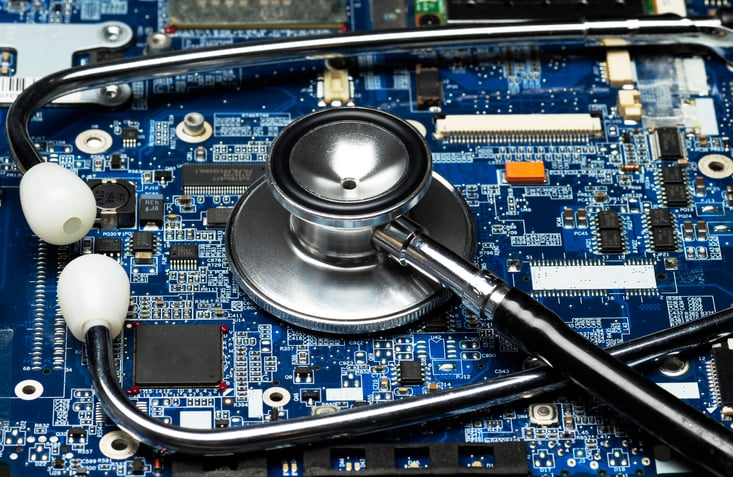Medical PCB Assembly Guidelines

Medical PCBA (Printed Circuit Board Assembly) is a critical component in medical devices and equipment. Medical PCBA is used in a wide range of medical applications, including monitoring and diagnostic equipment, surgical instruments, implantable devices, and more. Medical PCBA is essential in the functioning of many medical devices and is relied upon to deliver accurate, reliable, and timely results.

How Medical PCB Assembly Works
Medical PCB assembly involves the manufacturing and assembly of printed circuit boards (PCBs) for use in medical devices and equipment. Medical PCBs are used in a range of applications, including monitoring and diagnostic equipment, surgical instruments, and implantable devices.
Here is a general overview of how medical PCB assembly works:
Design and engineering: The first step in medical PCB assembly is the design and engineering phase. This involves creating a detailed schematic of the circuit board, including the placement of components, traces, and other features. This phase also includes ensuring that the PCB design meets the requirements for the specific medical application and any applicable regulations.
PCB fabrication: Once the PCB design is finalized, the next step is to fabricate the PCB. This involves producing the circuit board according to the specifications in the design, including the size, number of layers, and material used. PCB fabrication typically involves a range of processes, including drilling, plating, and etching.
Component placement: Once the PCB is fabricated, the next step is to place the components on the board. This can be done using surface mount technology (SMT) or through-hole technology. SMT involves mounting components directly onto the surface of the PCB, while through-hole technology involves inserting components through drilled holes in the board.
Soldering: After the components are placed on the board, the next step is to solder them in place. Soldering involves using heat and a special type of metal alloy to bond the components to the PCB. Soldering can be done by hand or by using specialized equipment.
Testing and quality control: Once the PCB is assembled, the next step is to test it to ensure that it works correctly. This involves using specialized equipment to test the circuitry, components, and overall functionality of the PCB. Quality control processes are also in place to ensure that the PCB meets the required standards and regulations for the medical application.
Final assembly: After the PCB has been tested and quality checked, the final step is to assemble it into the final medical device or equipment. This can involve connecting the PCB to other components or subsystems, such as sensors or display screens.
Overall, medical PCB assembly requires a high level of precision and attention to detail, as the PCBs are often used in critical medical applications where reliability and safety are paramount.
What to pay attention to in medical PCB assembly
Medical PCB assembly requires a high level of precision and attention to detail to ensure that the PCBs are safe, reliable, and meet the required standards and regulations for medical applications. Here are some of the key considerations to keep in mind when it comes to medical PCB assembly:
Compliance with regulations: Medical PCBs are subject to strict regulations and standards, including the FDA’s regulations for medical devices and the EU’s RoHS Directive. It is important to ensure that the PCB assembly process follows these regulations and that the PCBs are compliant with the relevant standards.
Component selection: The components used in medical PCB assembly must be carefully selected to ensure that they are appropriate for the specific medical application. Factors such as temperature, humidity, and sterilization methods must be taken into account when selecting components.
Traceability: Medical PCBs must be traceable throughout the manufacturing process to ensure that any issues can be traced back to their source. This is especially important in the case of recalls or other safety issues.
Quality control: Quality control processes are critical in medical PCB assembly to ensure that the PCBs are reliable and safe. This can include visual inspection, functional testing, and other quality control measures.
Sterilization: In some cases, medical PCBs must be sterilized before they can be used in medical devices or equipment. It is important to ensure that the sterilization method used is appropriate for the PCB and does not damage or degrade the components or the PCB itself.
Documentation: Documentation is an important aspect of medical PCB assembly to ensure that the PCBs meet the required standards and regulations. This can include documentation of the PCB design, materials used, quality control measures, and any testing or sterilization processes.
Overall, medical PCB assembly requires a high level of expertise and attention to detail to ensure that the PCBs are safe, reliable, and meet the required standards and regulations for medical applications. It is important to work with a reputable PCB manufacturer with experience in medical PCB assembly and a strong commitment to quality and compliance.